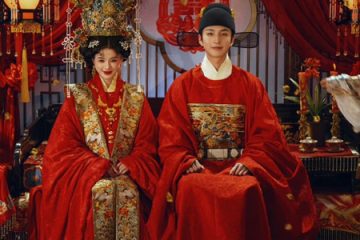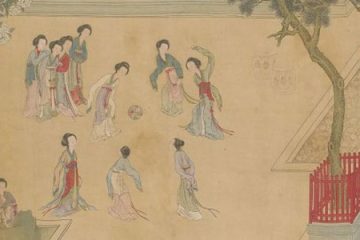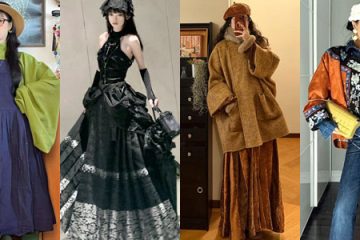Cultural Significance: Understanding the Symbols and Patterns in Hanfu

Hanfu, the traditional attire of the Han Chinese people, embodies centuries of history, culture, and artistry. As modern fashion enthusiasts and cultural aficionados rediscover Hanfu, understanding the intricate symbols, patterns, and colors woven into these garments deepens our appreciation for their timeless beauty and significance. This comprehensive exploration delves into the meanings behind the traditional motifs, the symbolism of colors, and the design elements that make Hanfu a profound expression of Chinese heritage.
Introduction to Hanfu
Hanfu, literally translating to “Han clothing,” refers to the traditional garments worn by the Han Chinese before the advent of the Qing Dynasty’s attire. Characterized by flowing robes, wide sleeves, and intricate embroidery, Hanfu is more than just clothing—it’s a manifestation of cultural identity and philosophical ideals. In recent years, there has been a resurgence of interest in Hanfu, sparking movements that celebrate and revive this ancient style as a means of reconnecting with Chinese heritage.
Historical Context of Hanfu
The history of Hanfu spans over three millennia, evolving through various dynasties, each contributing distinct styles and embellishments. From the simple, elegant lines of the Han Dynasty to the more ornate designs of the Tang and Ming Dynasties, Hanfu has continually adapted while retaining its core aesthetic principles. Understanding this historical trajectory provides a foundation for appreciating the cultural symbols embedded in Hanfu’s designs.
Common Motifs and Their Meanings
Dragons and Phoenixes

Perhaps the most iconic symbols in Hanfu embroidery are dragons and phoenixes. The dragon, a symbol of imperial power, strength, and good fortune, often adorns the robes of emperors and officials. Contrastingly, the phoenix represents grace, beauty, and high virtue, traditionally associated with empresses and noblewomen. Together, these mythical creatures embody the harmony of yin and yang, underscoring the balance of power and beauty in Chinese cosmology.
Cranes and Peonies

Cranes are revered in Chinese culture as symbols of longevity, wisdom, and fidelity. Their depiction in Hanfu signifies the wearer’s aspirations for a long and virtuous life. Peonies, often referred to as the “king of flowers,” symbolize wealth, honor, and prosperity. When combined in Hanfu patterns, cranes and peonies reflect the wearer’s hope for success and enduring fortune.
Clouds and Waves

Cloud patterns in Hanfu designs are emblematic of the heavens, representing freedom, spirituality, and the connection between the mortal realm and the divine. Waves, on the other hand, signify perseverance, progress, and the continuous flow of life. These natural motifs highlight the philosophical underpinnings of Hanfu, emphasizing harmony with nature and the eternal cycle of existence.
Bamboo and Orchids

Bamboo, with its slender form and resilient nature, symbolizes integrity, flexibility, and moral uprightness. Orchids, delicate and fragrant, represent purity, refinement, and scholarly pursuit. Together, bamboo and orchids in Hanfu embroidery convey the wearer’s dedication to moral virtues and intellectual growth.
Colors and Their Symbolism
Color plays a pivotal role in Hanfu, each hue carrying specific cultural meanings rooted in Chinese philosophy and tradition.
Red
Red is perhaps the most auspicious color in Chinese culture, symbolizing luck, happiness, and celebration. In Hanfu, red is often used for festive occasions, weddings, and other joyful events. Its vibrant presence exudes vitality and prosperity.
Blue and Green
Blue and green symbolize immortality, tranquility, and renewal. These colors are frequently seen in Hanfu designs associated with spirituality and nature, reflecting a serene and harmonious disposition.
Yellow
Yellow holds imperial significance, historically reserved for the emperor and symbols of supreme power. In Hanfu, yellow signifies authority, nobility, and the centrality of the wearer in social hierarchies.
White and Black
White, traditionally associated with mourning and purity, appears in Hanfu to convey solemn respect or elegant simplicity. Black, representing mystery and depth, is used to create bold contrasts and emphasize intricate patterns.
Gold and Silver
Gold and silver accents in Hanfu denote wealth, luxury, and celestial beauty. These metallic tones enhance the grandeur of the garments, making them suitable for ceremonial and high-status occasions.
Design Elements and Patterns
Embroidery Techniques
Embroidery is a hallmark of Hanfu craftsmanship, showcasing meticulous attention to detail and artistic expression. Techniques such as satin stitch, split stitch, and couching are employed to create textured and vibrant patterns that adorn the fabric. The craftsmanship involved in Hanfu embroidery represents the skill and dedication of the artisans who preserve these traditional methods.
Panel and Border Designs
Hanfu garments typically feature elaborate panel and border designs, enhancing their visual appeal and symbolic significance. Horizontal panels often depict scenes from nature or mythology, while borders may highlight specific motifs like clouds or waves, framing the main patterns and adding layers of meaning to the attire.
Structural Elements
The structural elements of Hanfu, including collars, sleeves, and hems, are thoughtfully designed to complement the overall aesthetic. Wide sleeves allow for graceful movement, while structured collars and fitted waists create a balanced silhouette. These design elements not only contribute to the garment’s beauty but also enhance its functionality and comfort.
Regional Variations and Symbolism
Hanfu’s motifs and patterns can vary significantly across different regions and periods, each bringing unique cultural influences and local traditions.
Northern and Southern Styles
Northern Hanfu styles often emphasize bold colors and intricate embroidery, reflecting the region’s vibrant cultural heritage. Southern styles, conversely, may favor more subdued hues and delicate patterns, highlighting the area’s appreciation for subtlety and refinement.
Ethnic Influences
While Hanfu is predominantly associated with the Han Chinese, regional ethnic minorities have also contributed to its diversity. Incorporating elements from other ethnic traditions, such as Mongolian or Tibetan motifs, Hanfu reflects the multicultural fabric of China’s history.

Modern Appreciation and Revival
The resurgence of Hanfu in contemporary fashion is not just a trend but a movement aimed at cultural preservation and identity affirmation. Modern designers blend traditional elements with contemporary styles, making Hanfu accessible and appealing to new generations. This revival encourages wearers to connect with their heritage, fostering a deeper appreciation for the symbols and patterns that define Hanfu.
Hanfu Communities and Events
Global Hanfu communities and events play a crucial role in promoting understanding and appreciation. Through meetups, fashion shows, and cultural festivals, enthusiasts share knowledge about Hanfu’s rich symbolism and craftsmanship, fostering a sense of unity and pride among wearers.
Educational Initiatives
Educational initiatives, including workshops and online resources, provide insights into the historical and cultural contexts of Hanfu. These platforms educate the public about the significance of different motifs, colors, and designs, enhancing the overall appreciation of Hanfu attire.
Conclusion
Hanfu is more than a traditional garment; it is a tapestry of cultural symbolism, artistic expression, and historical legacy. Understanding the meanings behind its motifs, colors, and designs enriches our appreciation and connection to this timeless attire. As Hanfu continues to gain popularity, embracing its cultural significance ensures that this beautiful tradition remains vibrant and meaningful for generations to come.
Embracing Hanfu is an invitation to explore and celebrate Chinese heritage, making each garment not just a piece of clothing but a story woven with symbols, colors, and patterns that speak to the heart of Chinese culture.
Keywords
Hanfu, traditional Chinese clothing, Hanfu motifs, Chinese cultural symbols, Hanfu colors, Hanfu patterns, Hanfu designs, Chinese heritage, traditional attire, Hanfu symbolism, cultural significance of Hanfu, modern Hanfu revival, Hanfu embroidery, Chinese fashion traditions



0 Comments